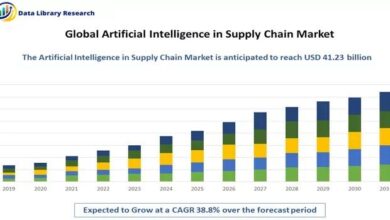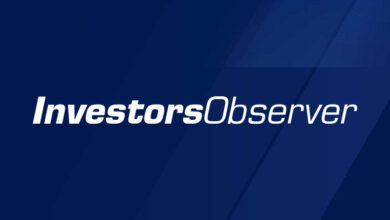Financial advisors need not fear AI, Betterment’s Thomas Moore says

- Thomas Moore is the director of Betterment for Advisors.
- Moore previously held lead sales roles for Affiliated Mangers Group, SEI, and the Vanguard Group.
Greg Hinsdale | The Image Bank | Getty Images
For registered investment advisors, advancements in artificial intelligence have brought to the surface lingering feelings of unease that many advisors have had since the robo-advising boom of the early 2010s.
The AI explosion has dovetailed with Thomas Moore’s time as the director of Betterment for Advisors. Moore previously held lead sales roles for Affiliated Mangers Group, SEI, and the Vanguard Group.
Moore shared his thoughts on what advisors should know about automation ahead of the CNBC FA Summit on May 22.
(This interview has been edited and condensed for clarity.)
Kiley Lambert: Let’s start with the big picture. What do you say to advisors who perceive automation as a threat to the ways they’ve traditionally operated?
Thomas Moore: Back in 2012, big advisors were initially threatened with the idea that robo-advisors are going to come to steal their clients. We heard that from a lot of financial advisors that are now our customers. So, first and foremost what we found was that trend did not end up coming to fruition. The financial advisor space is growing now as much as it ever has, alongside the growth of the robo.
And the reason for that is that they serve a different client — a DIY [do-it-yourself] client versus a client who is looking to work with a financial advisor. So, they really do co-exist. What we’ve seen is that a lot of the tools that were originally characterized with robo-advisors are now tools that advisors use every day in their practice.
A word we use a lot to describe the challenges in the financial advisor landscape is inertia. Inertia is a powerful force and whether that’s just getting advisors motivated to move clients from the platform they use today … or more importantly, to get advisors to embrace a new way of doing things, that is the number one challenge.
KL: Where are you seeing the most growth right now in your advisor business? Do you see more adoption from younger advisors?
TM: It’s correct that younger advisors may be earlier adopters of new technology and may not have as large of practices that have been built around legacy processes and infrastructure. That means there are significantly fewer barriers for us to work with that cohort.
But I think really the bigger indicator of success for us is just a willingness to embrace a new and better way of doing things. It’s a little bit of a leap to change your processes and the way you’ve always done things, but valuing new technology and a willingness to make change to drive efficiency is the core indicator.
So, yes, we see that a lot with millennial-aged advisors but not only millennial-aged advisors. I think there is an older group that is tired of how tired of how things have traditionally had to work with legacy custodial players, and they want to make changes to build their business quicker, or to give themselves time back to spend with their clients, whatever the goal is.
KL: Another big topic among our audience members is the “great wealth transfer.” What’s your view on what advisors should be doing to bring in next-gen clients who will be on the receiving end of much of this inherited wealth?
TM: What advisors should be doing to address the wealth transfer is continuing to build relationships with the clients who have the money today and with those clients’ next of kin. It is ultimately a relationship business and what’s important is that you’re viewed as the expert and the fiduciary for not only the existing clients but the clients of tomorrow. That’s a lot of what we talk to advisors about.
Where we can add value is helping advisors understand how to better engage with clients from different demographics, like millennial clients if you will, who might have different needs and preferences when it comes to how they engage with their advisors.
KL: What do you see on the horizon in the financial advisor space?
TM: The first thing is the shifting landscape for RIA custodians. We saw the merger of [Charles] Schwab and TD [Ameritrade] last year. That’s opened up a huge opportunity in the market for alternatives, especially in the smaller RIA world where we’ve seen advisors want better technology for a long time, but now we have kind of a moment that’s giving them the motivation to actually consider a change.
We saw some activity leading up to [the merger], and now that the dust has settled we continue to see that as a tailwind for our business. Opportunity in that space will continue to be an interesting story to watch for the next couple of years even.
The other thread we’re tracking is what I call the retirement-to-wealth movement, which is wealth advisors becoming more interested in doing 401(k) business targeting their small business-owner clients. With [Setting Every Community Up for Retirement Enhancement (SECURE) Act] and some of the tailwinds in that market, that’s becoming something more of interest for these wealth-focused advisors as another revenue stream.
And then I think for retirement plan-focused advisors, it’s becoming more and more common that we’re seeing them interested in converting their retirement-plan participants to wealth to drive higher margins and to engage with them more holistically. When we think about that trend, we think of Betterment as positioned very well because we’re operating in both businesses.
Join the CNBC Financial Advisor Summit on Wednesday, May 22, where you’ll hear from top investing experts about the current bull market, whether it will last, and what it means for financial advisors and investors. You’ll hear from Tom Lee of Fundstrat Global Advisors, Carla Harris of Morgan Stanley, Penny Pennington of Edward Jones, Savita Subramanian of Bank of America, and many others. Register now.



